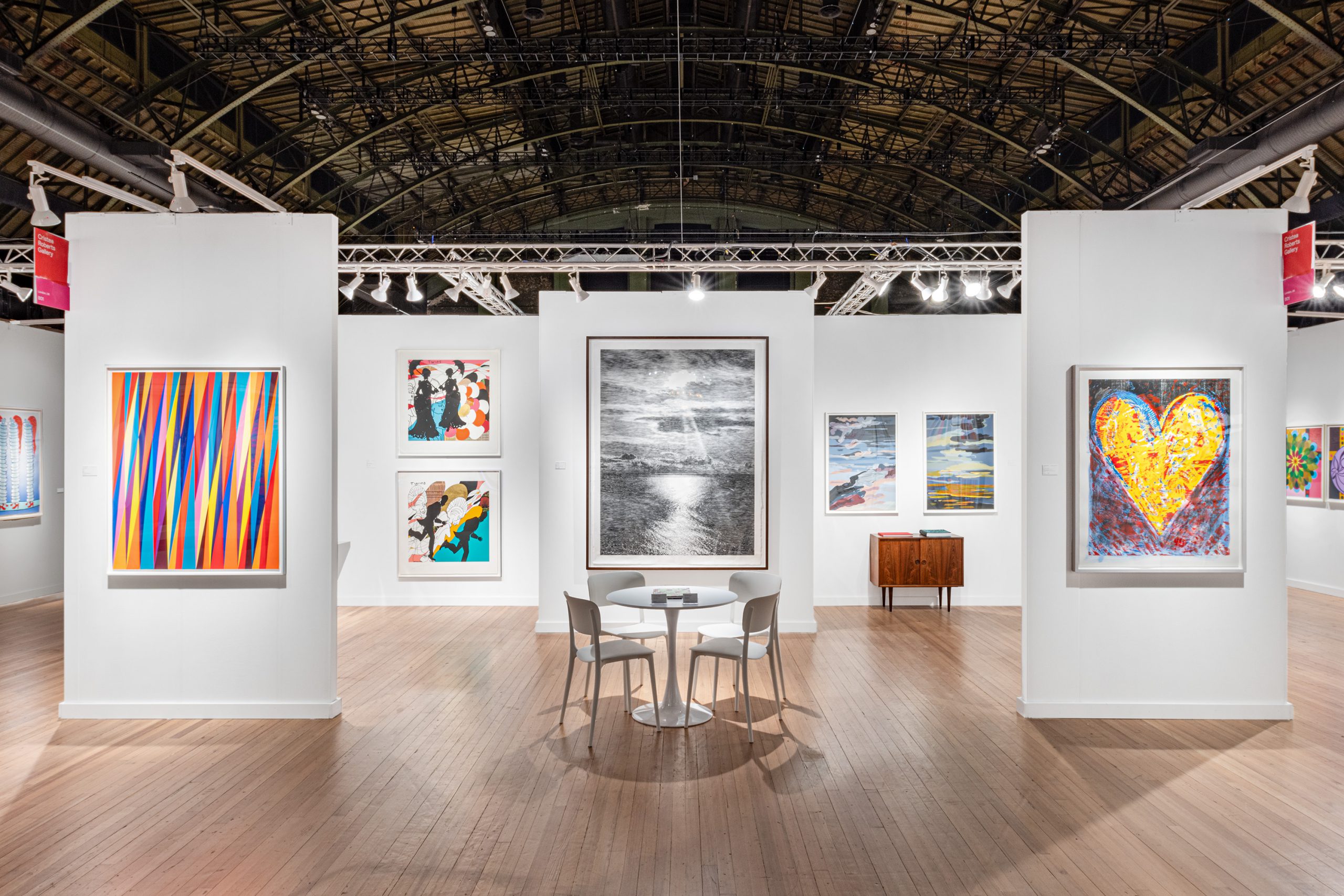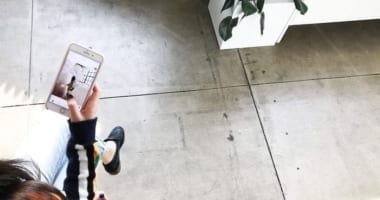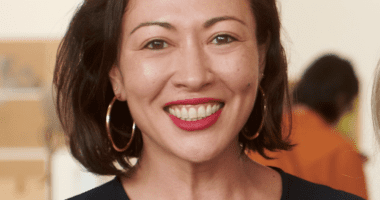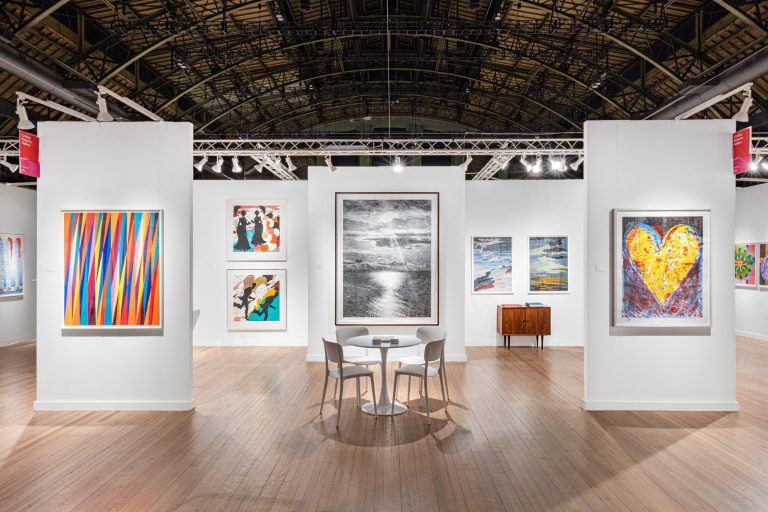
Installation view of Cristea Roberts Gallery at The IFPDA Print Fair, New York, 2024 © Cristea Roberts Gallery, London. Photo by Mikhail Mishin. Courtesy of Cristea Roberts Gallery.
As summer winds down, the art fair season kicks into high gear, marking a critical time for galleries attending to define their success for the end of the year. From Frieze Seoul and Frieze London to The Armory Show and Art Basel in Miami Beach, fairs are not just marketplaces. These tentpole events are arenas for showcasing talent, forging connections, and making a name for your gallery on the international playing field. Populated by collectors, art advisors, journalists, and museum curators, the art fairs can open doors to new ventures and possibilities.
“Art fairs are so central to what we do,” said Holly Braine, director of sales at Annely Juda Fine Art, a gallery that has attended every single Art Basel since 1971. “They dominate our calendar. We easily do as many fairs, if not more, than we hold exhibitions in the gallery. So they’re really the beating heart of our company.”
Art fairs are expensive investments for the galleries that take part in them, and leaping into your first fair is no simple task. Here, we speak with four galleries well-versed in the international market to offer advice on how to prepare for the art fair season ahead.
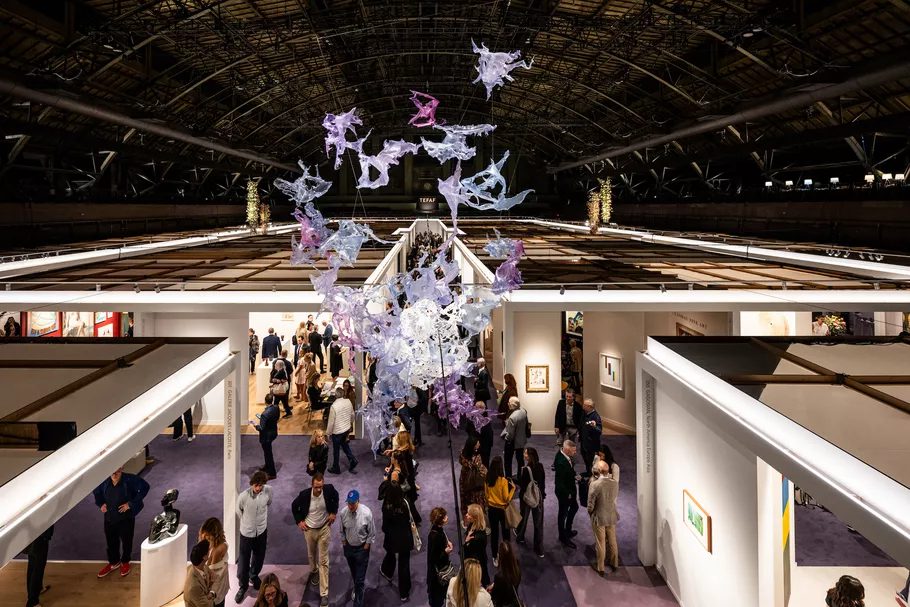
Interior view of TEFAF New York, 2024. Photo by Jitske Nap. Courtesy of TEFAF.
Identify the personalities
Each art fair attracts its own particular crowd. TEFAF is packed with museum curators, Frieze Los Angeles hosts swells of celebrities, Art Basel brings together the entire blue chip art world, and so on. Understanding these specific audiences and curatorial focuses is key to planning the most engaging presentation.“The challenge is giving each fair its own identity, its own hook,” said Braine.
Understanding the nuance of each fair will enable you to select the works and artists that best suit the proclivities of its visitors. “All our strategies in advance of a fair are to this end, and it begins with making the initial selection of artworks for each fair,” said Luke Duncan, associate director of Cristea Roberts Gallery. “We treat each fair differently, depending upon location and timing within the annual fair calendar, and we emphasize the works of our selected artists for each fair.”
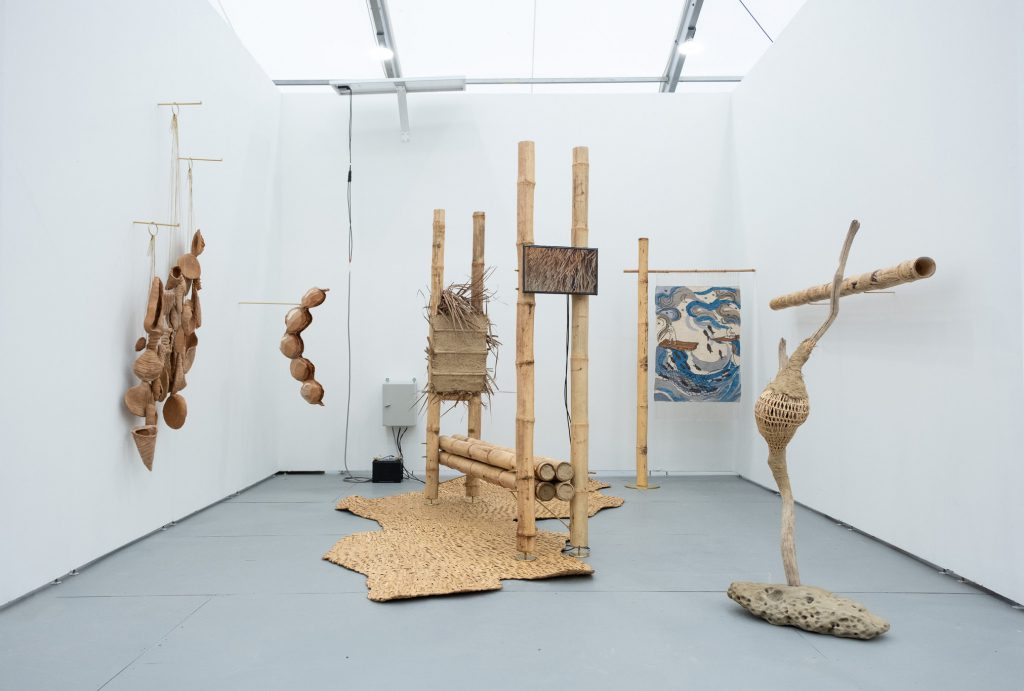
Installation view of Nunu Fine Art’s booth at Untitled Art, Miami Beach, 2023. Courtesy of Nunu Fine Art.
Set goals ahead of time
Effective preparation for an art fair involves setting clear commercial objectives before the event and ensuring that the entire team is on the same page. Whether the goal is to meet new collectors or sell works to specific curators, understanding precisely what you want to get out of a fair should be your starting point.
“We’re just approaching the application deadline for Art Basel 2025,” said Braine. “We’re having to think very, very far ahead. We know we have to have our creative idea by that deadline, and then from there, we can start planning the shipping logistics and choosing the paintings that we want to ship. Communication is such a cliche, but that’s the key to everything.”
Meanwhile, Aniko Erdosi, senior director at Nunu Fine Art, suggests going to the fair only after properly researching the possible attendees and collectors. “Have your eye on the prize,” she advised. “I always tell younger members that even if they feel like this museum is too big for us or that person is too important to come to our small gallery booth, it doesn’t matter. You want your wish list prepared. Let’s say you identify 20 must-haves. Google them and have every team member who potentially will be in the booth know what those people look like.”
Build logistical relationships
Art fairs are, above all, trade shows. Navigating the logistical side of attending art fairs is crucial to making the process as smooth as possible. This boils down to two factors: experience and team building. Tapping into the networks of gallery peers is a key way to find trustworthy vendors. At Cristea Roberts Gallery, the external team comprises various shippers, photographers, and vendors with which the gallery has developed long-standing relationships over the years.
“Depending on where we are in the world, we have built up a network over decades of exhibiting at fairs,” said Duncan. “Each relationship is valued and built upon trust and experience. Art fairs can be complicated to coordinate, but when you have a good team who you can trust, it removes the stress of arranging what could potentially be a daunting process.”
Other galleries, such as Sabrina Amrani, prefer to train a team in-house. “The experience has taught us, in the hard way, that the more we get done in-house, the better,” said Jal Hamad, co-founder of the gallery.
Regardless of the approach, the underlying principle remains the same: the importance of reliable, skilled teams—whether internal or external. Establishing and maintaining long-standing relationships with regular shippers, photographers, and other vendors is crucial. As galleries gain experience and expand their international footprint, they also build up a network of contacts they can rely on.
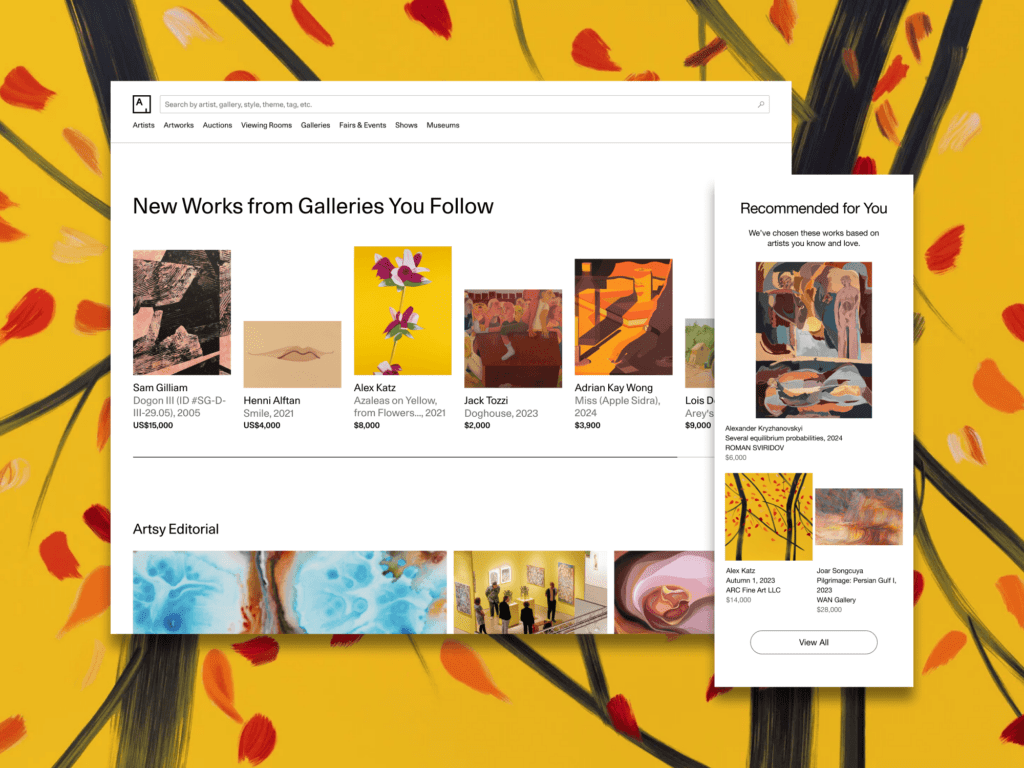
Upload your booth to Artsy
Uploading your fair booth to Artsy extends your reach, connecting you with a global audience beyond those in the fair concourse. “Traditionally, there are two ways galleries typically meet clients,” said Erdosi. “Either somebody walks into your gallery, or you go to an art fair. But with a platform like Artsy, now there’s a third way, essentially, and that is a constant visibility online, where clients can find you globally,” she added.
At the fair, having your inventory uploaded on Folio or having viewing rooms prepared significantly enhances your ability to appeal to collectors at the fair.
“When it comes to the fair proper, we use Folio,” said Braine. “At the most recent Basel, we had some lovely David Nash sculptures, and a client I was speaking to needed something a bit smaller for her home. I was able to pull up Folio on our iPad and just show her all of the Nash sculptures that we have in our inventory on a smaller scale, and from that, she then bought two sculptures.”
This preparatory work is not just logistical—it’s a strategic expansion of your gallery’s footprint. By investing time in setting up online tools, you can increase your capacity to reach curious collectors beyond the physical confines of the fair, enhancing your potential for success.
“Let’s say you are a client from Tampa, Florida, and you plan to spend three days in Miami,” explained Erdosi. “You’re not going to see everything. Online platforms like Artsy can act as a supplement where you can browse through many presentations in a short period of time while you’re waiting at the airport or riding in an Uber and pick the art you do not want to miss seeing in person. It saves time, logistics, and traveling because you can flip through a lot of content much faster.”
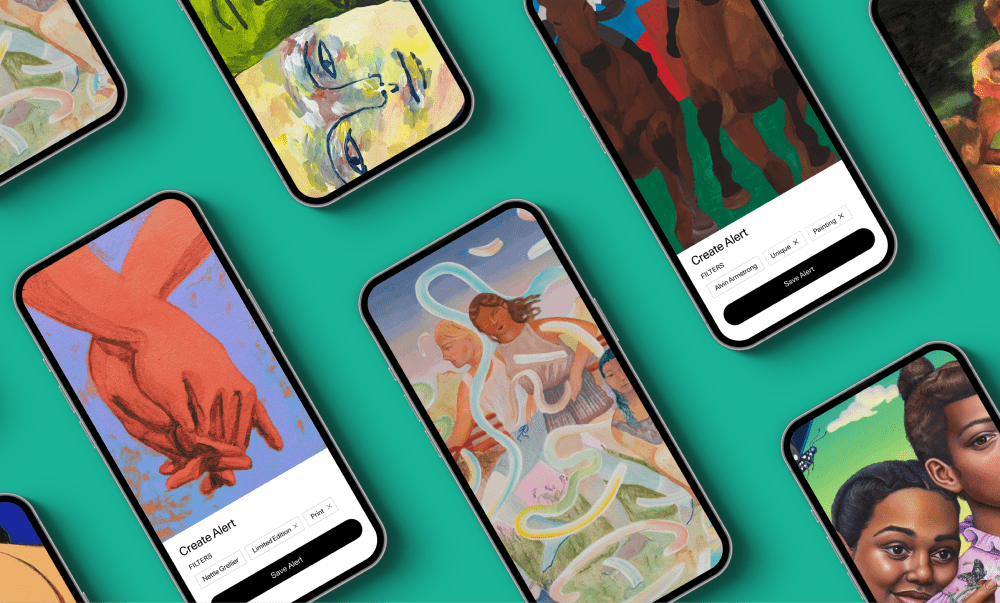
Maintaining momentum
Selling works during the course of a fair is important, but investing in longevity and relationships is the real key to sustained success. As the fair season starts, making connections is paramount. “You have to do the follow-ups via email and try to establish conversations with the contacts that you made during the fair,” said Hamad. Yet, that only scratches the surface.
“We have a little black book on our desk where we write notes, and it’s not just the email we record,” said Braine. “We’ll say whether they liked a particular color or a particular scale, and recording all of those bits of identifying information means that then you can follow up a week or two weeks later.”
To build a name for your gallery, it’s essential to curate an online presence. Instagram, email, and Artsy act as critical tools for keeping the conversation going. Once you complete the fair, the work is far from over. “Conversations that began during a fair continue, as it’s important to nurture engagement. I feel that this is where the true collecting comes into play,” said Duncan.
